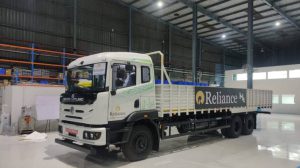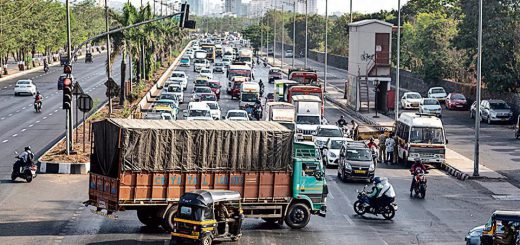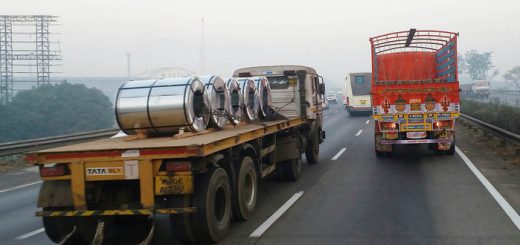Future of electric trucks in India – adoption rate, efficiency, and growth outlook of the market
India has over 2.8 million trucks traveling over 100 billion kilometers per year. Trucks represent only 2% of road vehicles by volume, but they are responsible for more than 40% of road transport emissions and fuel consumption. A handful of studies suggest that electric trucks would need to make up at least around 8% of all freight trucks by 2070 to achieve net zero emissions.
Despite what many may believe, the future of electric vehicles in India is very bright. Reduced manufacturing and running costs due to the emergence of breakthrough electric vehicle technologies in India and globally, and the drive to share these technologies for global benefit.
Electric vehicles (EVs) have proven to be not only a clean alternative to fossil fuel vehicles, but also among the most cost effective. Given rising fuel prices, this is a boon for the adoption of electric vehicles in India.
Electric vehicle (EV) technology plays an important role in today’s world with its environmental protection, low operating costs and net zero emissions. This could reduce the reliance of large countries on fossil fuel internal combustion engine (ICE) vehicles and alternative traditional transport systems.
Electric vehicle adoption
India is the world’s third largest automotive market in terms of sales, ahead of Germany and Japan. Now is the time for manufacturers and policy makers to work together to shift demand towards greener options. The automotive industry is a major contributor to India’s economy, accounting for 7.1% of its GDP and providing a large number of jobs.
However, electric vehicles only account for about 2% of total car sales in India, but the Indian government has set a goal to increase the adoption of electric vehicles over the next decade, putting focus on increasing purchases of two-wheelers.
Sales in India are expected to grow by 40% to 45% by 2030, with 13 million new vehicles sold annually thereafter, according to Bain & Company forecasts released in December. India’s four-wheeler industry is expected to grow by just 15-20% by 2030, with one million new vehicles sold every year, according to the consultancy.
For commercial vehicles, adoption rates for light trucks and buses are expected to be 20-25% and 15-20% respectively, reaching approximately 930,000 light commercial vehicles and approximately 175,000 buses by 2030. Similar to the rest of the world, EV adoption has been slowest for heavy trucks.

Favourable policies
The trucking industry is booming, with key developments such as improved communications, increased supply and demand, and greater use of technology. The road logistics market in India is expected to grow at a CAGR of 8% over the next three years to reach $330 billion by 2025. But given the pollution generated by trucks on Indian highways and the fact that trucks make up a big part of India’s logistics business, it’s time to think about how to make trucking greener.
The 2023 Economic Study forecasts the domestic electric vehicle market in India to grow at a compound annual growth rate (CAGR) of 49% between 2022 and 2030, reaching annual sales of 10 million units by 2030. Additionally, the electric vehicle industry is expected to create around 50 million direct and indirect jobs by 2030.
The government has set a target to achieve 30% electrification of the country’s vehicle fleet by 2030, and has introduced several incentives and policies to support the growth of the EV industry. The industry has received a big boost from the Union budget for FY24 in terms of electric vehicle production, hydrogen adoption and evolving technologies.
In the Union Budget 2023-24, Finance Minister Nirmala Sitharaman announced a budget allocation of INR 350 billion for key capital investments aimed at energy transition and net zero emissions by 2070. Additionally, she said the government would support a 4,000 MWH capacity battery storage system through the Viability Gap Fund.
For EV manufacturers, the government has introduced initiatives such as Accelerated Adoption Scheme for Electric Vehicle Manufacturing – II (FAME – II) and Production Linked Incentive Scheme (PLI). The budget allocated 5,172 crore rupees (about $631 million) to its FAME-II programme to subsidize and promote the adoption of clean-energy vehicles.
But, there’s a long way to go for electric trucks in India
The transport sector is responsible for nearly 14% of India’s total greenhouse gas emissions. It is also the fastest growing greenhouse gas emitting sector in India. Road transport, in particular, accounts for more than 90% of the country’s transport emissions. Therefore, to achieve net zero emissions, India needs to degas road transport.
The electrification of road transport will certainly significantly reduce the country’s overall greenhouse gas emissions. While the electrification of two and three wheelers, cars and buses is gaining momentum, the electrification of the heavy logistics sector is still lagging behind in India.
India has over 2.8 million trucks traveling over 100 billion kilometers per year. Trucks represent only 2% of road vehicles by volume, but they are responsible for more than 40% of road transport emissions and fuel consumption. A handful of studies suggest that electric trucks would need to make up at least around 8% of all freight trucks by 2070 to achieve net zero emissions.
Read more at-https://shorturl.at/diyVY




Recent Comments